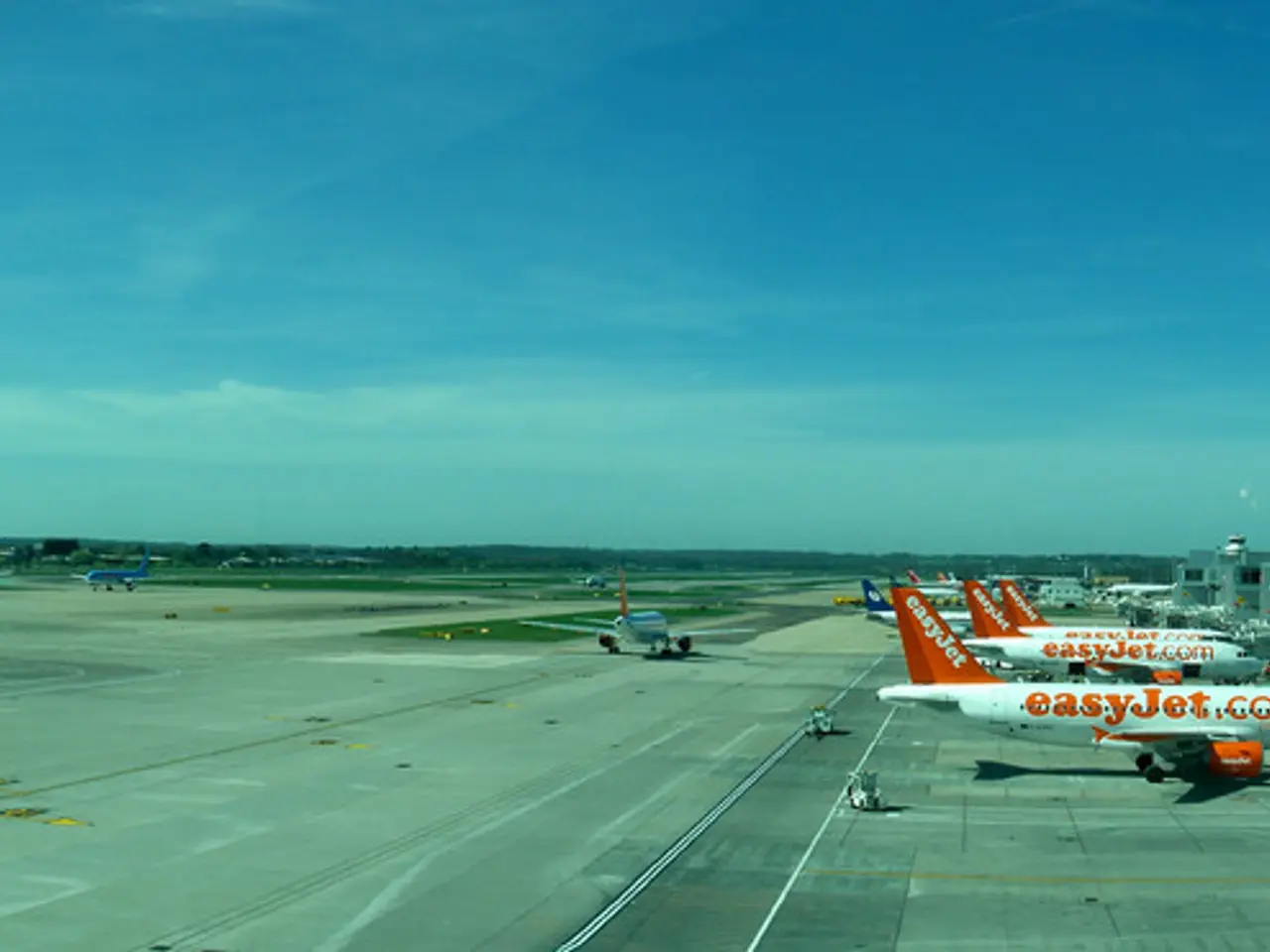Berlin's BER Airport: A Financial Burden and Economic Disadvantage
Berlin's Airport Struggles Amid High Costs and Airline Indifference
Berlin Brandenburg Airport (BER), a flagship facility for the city, is facing challenges that threaten its potential to boost the local economy and tourism. High operating costs, the retreat of budget carriers, and competitive indifference from major airlines like Lufthansa are collectively undermining BER's position [3].
The airport's troubles can be traced back to its early years, marked by significant planning and construction mismanagement. Privatization failures, fragmented contracts, and inadequate planning led to costly delays and reputational damage [2]. Although these historical issues have been addressed, they have left a lasting impact.
BER, however, has made strides in operational innovation and customer experience. By 2025, the airport has transformed into a hub of next-generation airport technologies, implementing AI-driven aircraft handling, contactless passenger biometrics, and advanced virtual queuing systems [1][5]. These innovations have enhanced turnaround times, increased security efficiency, and raised customer satisfaction, culminating in a Skytrax 4-star rating and the “Most Improved Airport” award.
Despite these operational improvements and a slight rise in passenger numbers, the airport remains challenged by external airline industry dynamics and its historically high costs [4][3]. This situation constrains BER’s ability to fully leverage Berlin’s tourism potential and to significantly boost the local economy through aviation-led growth.
Ryanair and easyJet, once anchors of BER's connectivity, are retreating due to soaring costs [4]. Ryanair had overtaken easyJet as Berlin's busiest airline by July 2024, but the airline announced it would cut 20% of its traffic at BER, eliminating 750,000 seats, dropping six routes, and reducing its Berlin-based fleet from nine to seven aircraft [4]. easyJet followed suit, announcing plans to reduce its fleet at BER from 18 to 11 aircraft, putting 275 pilot and cabin crew jobs at risk [4].
Berlin's high departure taxes, more than twice the level of Brussels, are a major concern for airlines, according to Lufthansa's Berlin representative, Thrasivoulos Malliaras, who described them as "the growth killer number one" [4]. The steep aviation tax and "sky-high access costs" in Germany are also blamed for Ryanair's decision to cut traffic at BER [4].
Berlin may have poured billions into BER, but without better connectivity, it risks becoming a modern purgatory for missed connections [3]. The city remains the only major European capital without a flagship long-haul hub carrier. Lufthansa, with Frankfurt and Munich as its strategic centers, has no incentive to build direct routes from Berlin [3].
In an effort to address these issues, Germany floated a lifeline in 2025, promising to roll back the 2024 air traffic tax hike and make flights cheaper by 2026 [6]. However, government insiders confirmed there's simply "no fiscal room" to reverse the increase, despite mounting pressure from airlines and airport operators [7].
In conclusion, while BER has overcome initial construction and management challenges and is now pioneering innovative airport operations, the combination of high costs and airline market shifts continues to limit its impact on Berlin’s tourism and economic expansion. The airport’s success in integrating advanced technologies may help mitigate these issues over time, but the legacy of past missteps and the current airline environment remain key obstacles.
References:
- BER Airport's Innovative Technologies
- BER's Construction and Management Missteps
- BER's Challenges and Impact on Berlin
- Airlines Retreating from BER
- BER's Skytrax Rating and Awards
- Germany's Promise to Roll Back Air Traffic Tax Hike
- Government's Lack of Fiscal Room to Reverse Tax Hike
- The underlined challenges at Berlin Brandenburg Airport (BER), including high costs and retreating budget airlines, are not confined to airport operations, but could have wider ramifications for education-and-self-development opportunities in Berlin, as the airport plays a significant role in tourism and attracting international visitors.
- A potential solution to the ongoing issues at BER, such as lower airline taxes and costs, could also impact the general-news headlines, given the continued discussions around easing airport accessibilities and boosting tourism. Additionally, any changes to BER's status could impact sports events that may depend on international participant travel, indirectly influencing the local sports scene.




